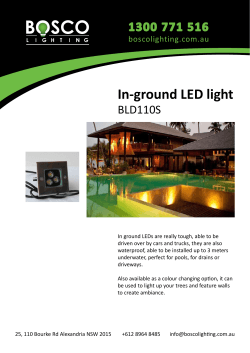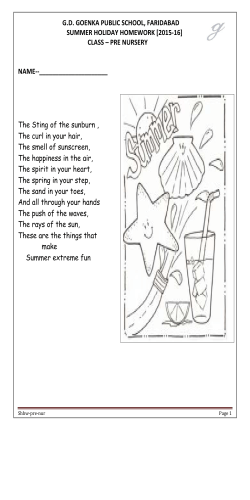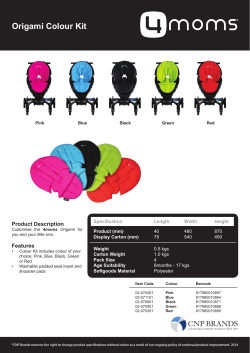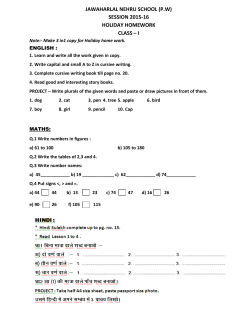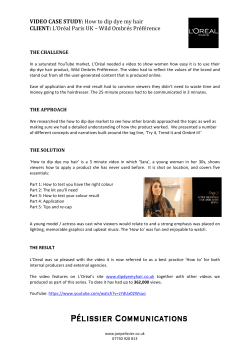
Elements & Principles of Design
Video Education Australasia Bringing Learning to Life Program Support Notes Secondary Elements & Principles of Design Teacher Notes by 30mins Jill Fitzgerald Dip Art (Graphic Arts), Dip.Ed. Produced by Video Education Australasia Commissioning Editor Christine Henderson B.Sc. Ph.D. Dip.Ed. Mark McAuliffe Dip.Art (Film & TV) Dip.Ed. B.Ed. Ph.D. Executive Producer © Video Education Australasia Pty. Ltd. Suitable for: Design & Tech Visual Communication & Design WARNING To order or inquire please contact VEA: Australia New Zealand E-mail 111A, Mitchell Street, Bendigo, Victoria 3550 FREECALL: 1800 034 282 Phone: (03) 5442 2433 Facsimile: (03) 5441 1148 PO BOX 4390, Shortland St., Auckland FREECALL: 0800 486 688 Facsimile: 0800 488 668 [email protected] Website www.vea.com.au The Copyright proprietor has licensed the motion picture contained on this program cassette for non-theatrical use only and prohibits any other use, copying, reproduction or performance in public, in whole or part. The penalties for unauthorised copying of this program include a $50,000 fine for individuals and a $250,000 fine for institutions. These notes can be freely copied for classroom use only. Elements and Principles of Design For Teachers: Brief Summary of Program This program explains the elements used in visual design and then explains how these can be arranged and organised using the principles of design. It draws on real life examples used in 2 dimensional (poster, information, web and magazines) and 3 dimensional (product and built environments) visual communications and designs. Diverse descriptions of each element and principle using both theoretical and practical explanations are included in this program. The effectiveness of the application of the elements and principles in design is an essential quality every design student is to understand and to apply for successful visual communications to be created. Examples of the impact of the use of the elements and principles including some traditional theories and how they are successfully used throughout the evolution of design are provided throughout this presentation. The elements and principles used in visual communications and designs determine the styles, fashions and trends that form the essence of all aspects of our visual world. Program Timeline 00.00 00.29 00.39 03.21 04.13 04.39 05.19 06.26 07.36 08.20 08.58 10.05 10.33 11.33 12.00 12.27 12.47 13.44 14.22 15.26 15.51 16.52 17.23 18.17 18.56 19.35 20.08 20.47 20.57 21.48 21.57 23.13 23.22 24.20 25.06 25.57 Copyright warning, VEA splashscreen, introduction Eight basic elements of design Eight principles of design Built environments Various aspects of the built environment Considerations for designing built environment Mark O'Dwyer on use of line in architecture Mark O'Dwyer on use of shape in architecture First summary - built environments Colour and texture in built environments Mark O'Dwyer on colour in architecture Examples of interior design Examples of environmental design Examples of structural design Second summary - built environments Products Examples of product types Considerations for designing products Food - Richard Dobson on colour Furniture Julian Pratt on chair use and design Chris Connell on aesthetic appeal of chairs Fashion Nicole Bride on ideas for fashion themes Summary - product design Information and communications Considerations for information and communications design Website design Paul Andrews on visual appeal of websites Logo design Kieran Doolan on VEA logo design The Windsor Smith billboard campaign Lisa Trendell on branding Windsor Smith Modelling the RRR computer network Phil Wales explains the RRR network Summary - information and communications 2 Elements and Principles of Design For Students: Suggested Activities Before Viewing the Program 1. Define, describe or visually represent the following eight elements or provide an example of each of the following design elements used in visual design. - Point - Line - Shape - Form - Colour - Texture - Tone - Letterform 3 of design: Elements and Principles of Design 2. Define, describe or visually represent the following eight principles or provide an example of each of the following design principles used in visual design. - Balance - Contrast - Cropping - Hierarchy - Figure-ground - Scale - Proportion - Pattern 4 of design: Elements and Principles of Design Suggested Activities While Viewing the Program 1. What are the eight basic elements of design? 2. How can point be important in a visual communication? 3. Identify how point can be used in architecture. 4. Identify the various types of line mentioned in the program. 5. In what different ways can you suggest line can be used in architecture? 6. Choose an object and break it down to its basic shapes 7. 5 Draw the lines that a handful of pebbles make when thrown into water. Elements and Principles of Design 8. How can form be created in a 2 dimension environment? 9. From a magazine collect a range of tones of one colour. What 2 colours have similar tonal qualities? 10. Discuss the impact of tone on our environment. 11. What visual effect can graduated tone have on an object? 12. What is the use of colour in design? 13. Identify the 4 colour systems mentioned in the program: a) List the warm colours: b) List the cool colours: 14. What are the two main font families? 15. Discuss the impact of what the choice of font can have on a visual communication. Refer to examples to help explain your thoughts. 6 Elements and Principles of Design 16. Collect an example of letterform in use and discuss how effectively it has been used. 17. Find an example of a poor choice of letterform. State the reasons for your choice. 18. Choose an object of design and annotate the design elements used to identify them. 19. What are the eight principles of design? 20. Provide an example of both a figure dominant and a ground dominant composition. 21. Choose a visual design and identify the figure in the composition. 22. What are the two types of balance? 23. Collect examples of both types of balance. 24. Discuss the rule of thirds. 7 Elements and Principles of Design 25. Identify two extreme contrasts that can be used in design: 26. What is the impact of contrast in design? 27. Discuss some methods which could be used to change the hierarchy of a composition. 28. What is the purpose of hierarchy in a design? 29. What happens when there is not a clear hierarchy evident in a visual composition? 30. Suggest an example of how scale can be used effectively. 31. What is the golden mean? 32. Draw a pattern using repetition and another using alternation. 33. Discuss the input of elements and principles on an old building, a new building, or in a style of art or fashion. 8 Elements and Principles of Design Suggested Activities After Viewing 1. Using tone make a 2D drawing of flat outlined shapes to appear 3 dimensional. 2. Choose a product you use in every day life. Break it down into its basic shapes. Comment on the principles of design evident in its design. 3. Select a package design – eg. Toothpaste box, soap box, can label. Scan it into your computer and using an image manipulation program such as PhotoShop or Fireworks or other paint programs and manipulate the image in the following ways. a) b) c) d) e) Change the colour system used Alter the attributes of the lines used in the design Add 3 dimensional effects Change the font style used Comment on the impact the changes to the design you have made in each example making particular note of the suitability to certain audience groups. 9 Elements and Principles of Design Other Relevant Programs available from VEA Design: Applying the Elements Designing a Chair - Sitting Pretty Website Design Essentials of Design and Technology Skills: Drilling, Lathes and Soldering CAD-CAM in Industry and Schools Creating a Logo: A Process for Designers Student Design Project: Two Case Studies Talking Buildings Supermodels Series Art of Design Series Please visit our website for many more relevant programs www.vea.com.au VEA - Bringing Learning to Life 10
© Copyright 2026
